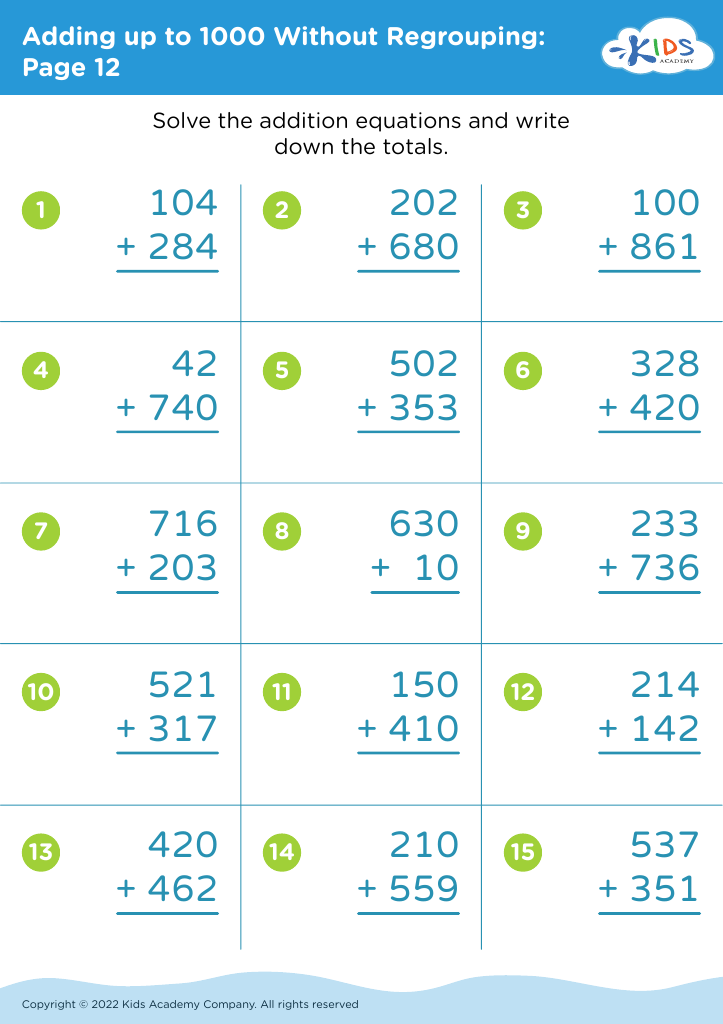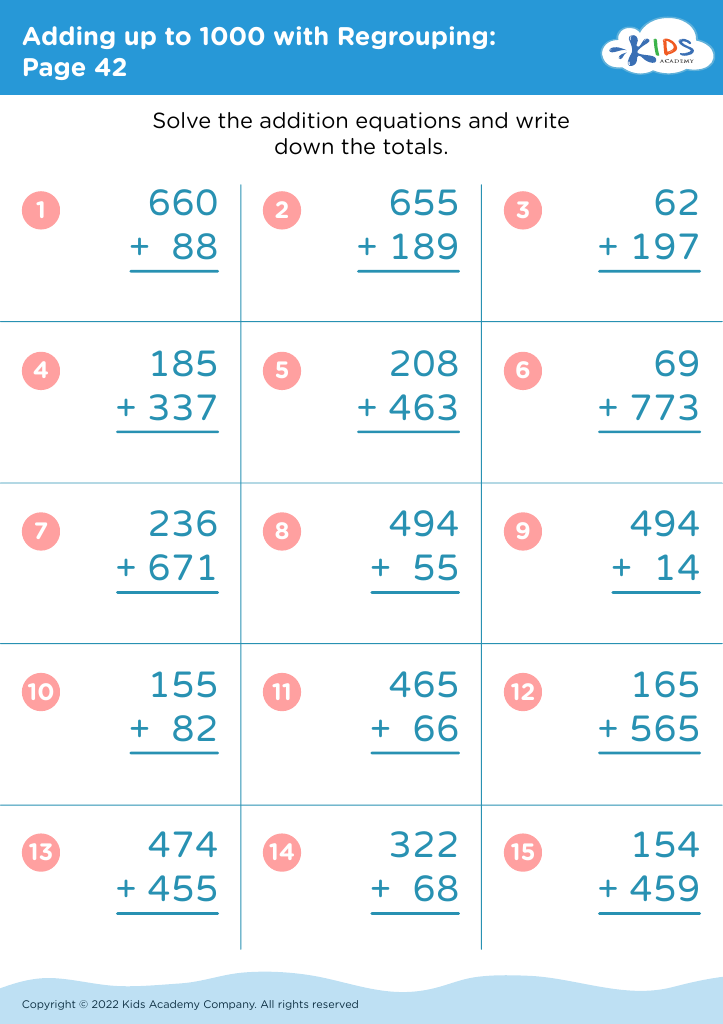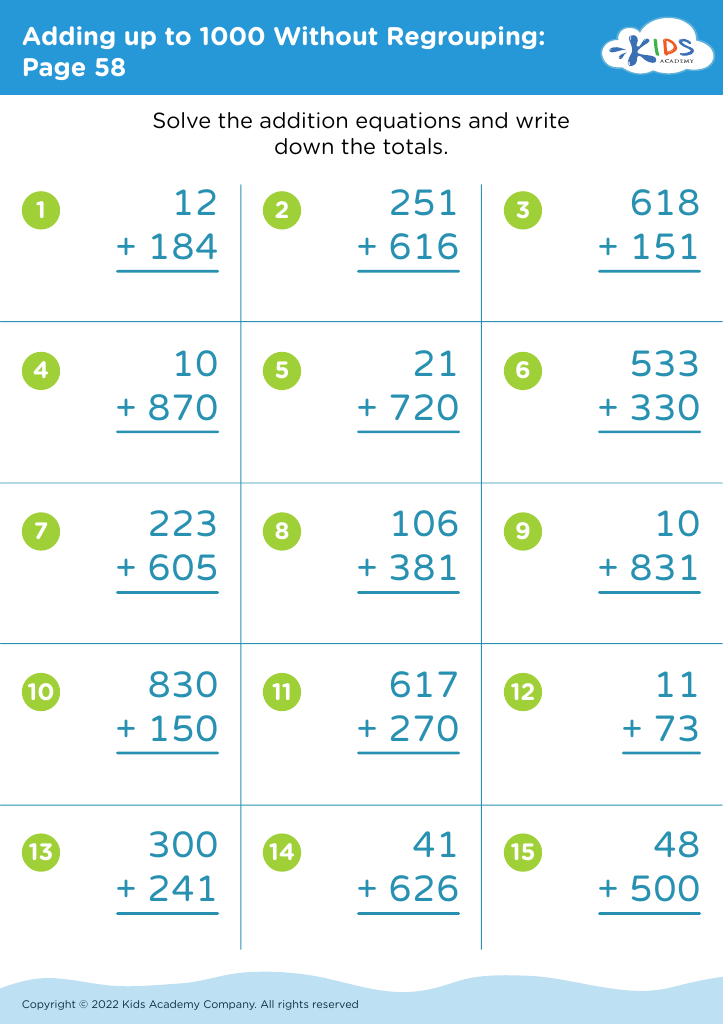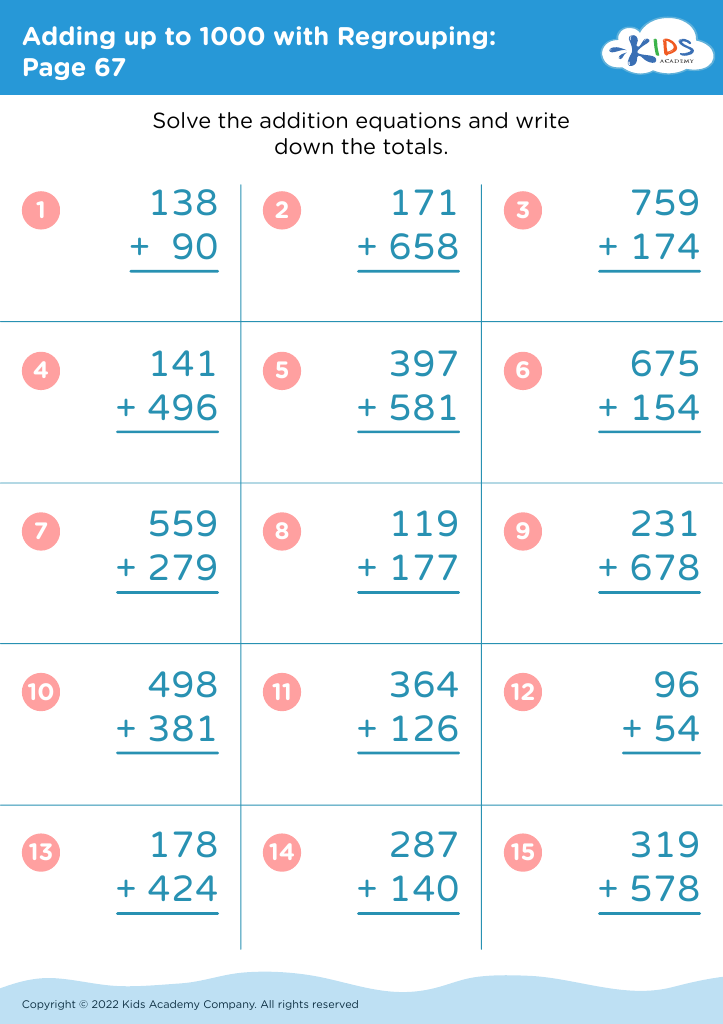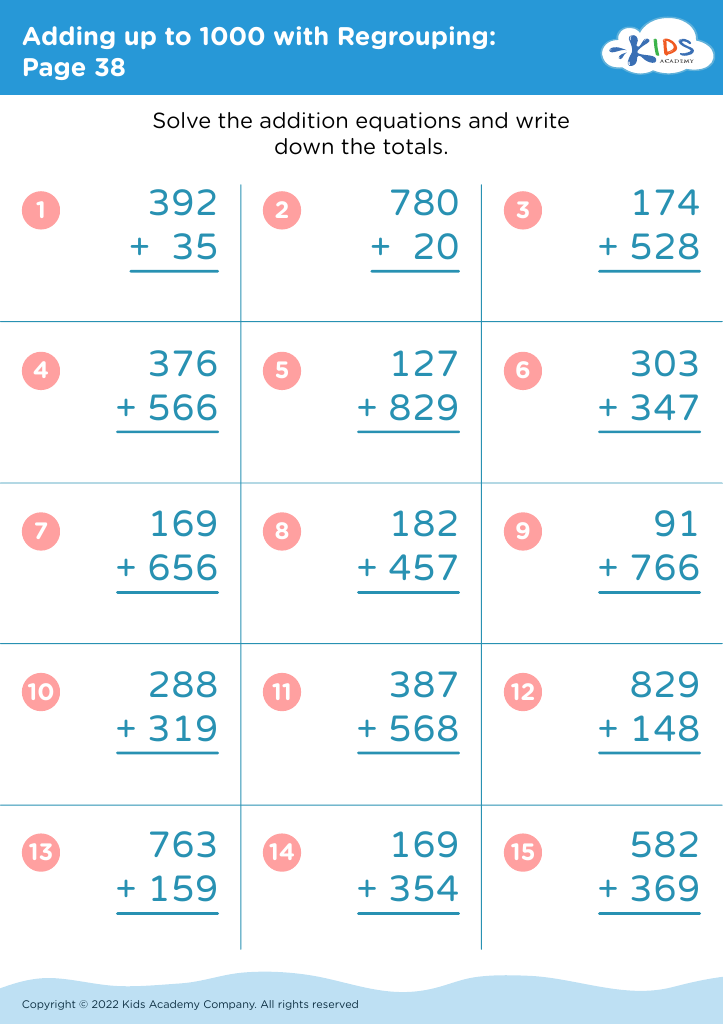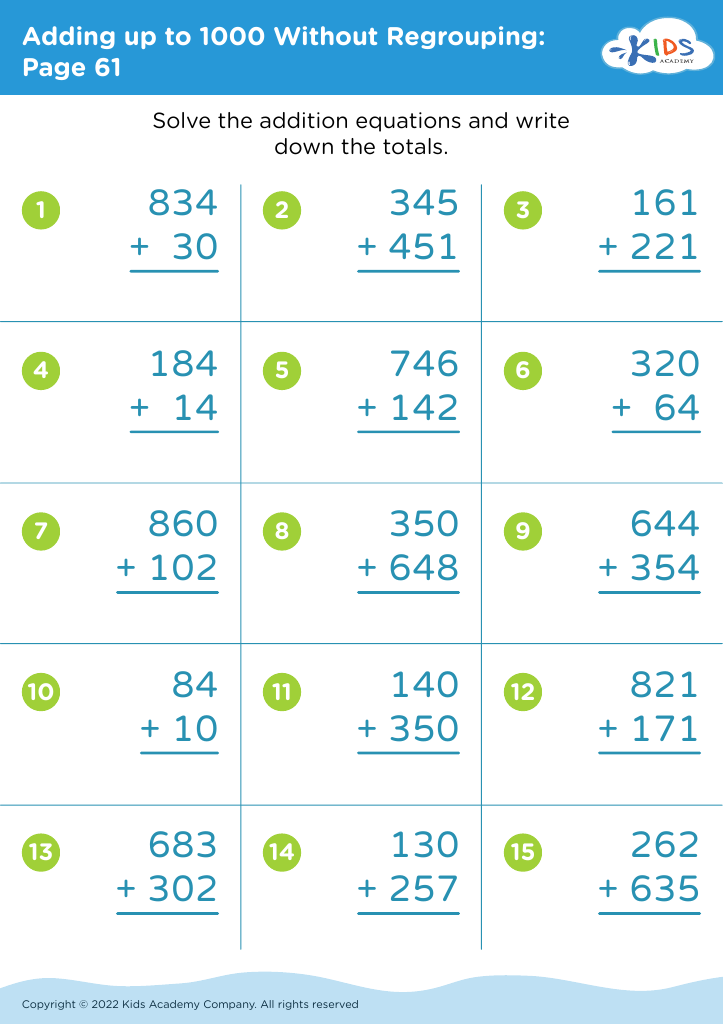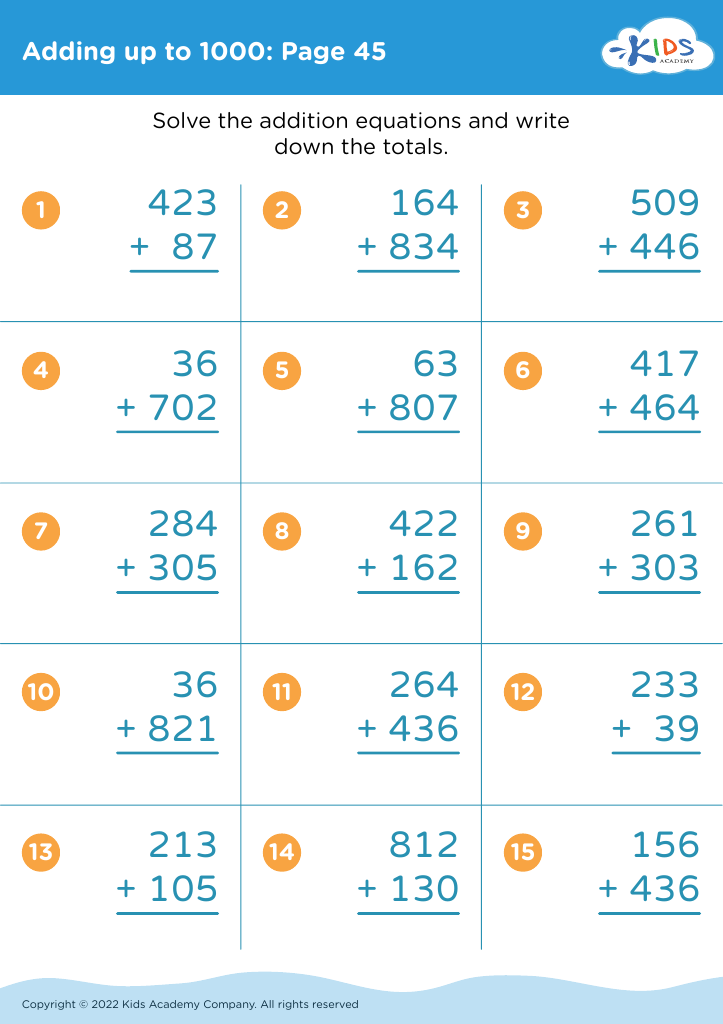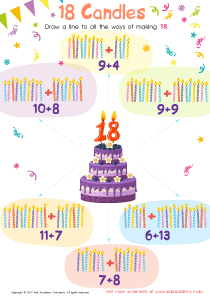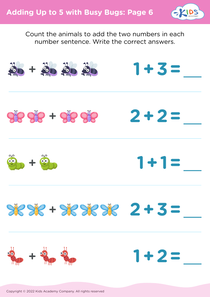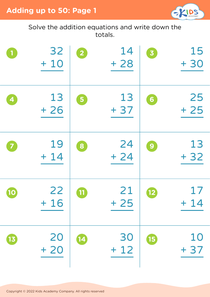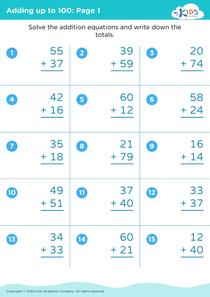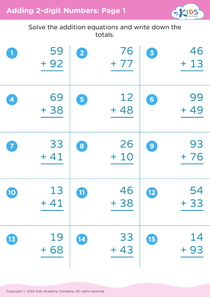Recognizing shapes Adding up to 1000 Worksheets for Ages 5-8
8 filtered results
-
From - To
Welcome to our "Recognizing Shapes Adding Up to 1000 Worksheets" for children aged 5 to 8! These engaging worksheets are designed to help young learners develop essential math and spatial recognition skills. As kids practice identifying and classifying various shapes, they will also enhance their ability to add numbers up to 1000. Our resources include interactive activities and colorful visuals that make learning shapes both fun and educational. Perfect for home or classroom use, these worksheets promote creativity and critical thinking in young minds. Dive into the world of shapes and numbers today for an exciting learning experience!
Recognizing shapes and understanding numerical concepts, such as adding up to 1000, are fundamental skills for children aged 5-8. Encouraging these skills helps lay the groundwork for critical thinking and problem-solving abilities.
Shape recognition sharpens children's observational skills, enabling them to identify and categorize objects in their environment. This foundational knowledge aids in spatial awareness, which is crucial for advanced subjects like geometry and engineering later in life. Additionally, discussing shapes can enrich vocabulary and enhance cognitive development through exploration and communication about various dimensions and characteristics.
Similarly, understanding numbers and the concept of addition up to 1000 establishes a robust mathematical foundation. Fluency in basic addition fosters confidence with more complex arithmetic and is essential for real-life scenarios, such as budgeting or telling time. It also nurtures analytical skills as children learn to manipulate and reason with numbers.
Encouraging both shape recognition and numeral comprehension can lead to a well-rounded education. When parents and teachers prioritize these learning areas, they not only promote academic success but also inspire a lifelong love of learning, enabling children to navigate their world with confidence and creativity. Investing in these competencies contributes significantly to a child's overall cognitive and emotional development.
